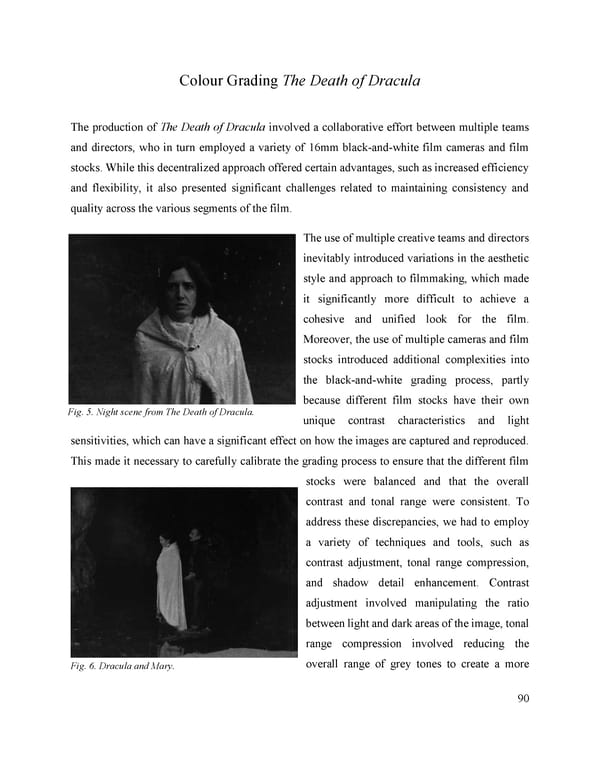Colour Grading The Death of Dracula The production of The Death of Dracula involved a collaborative effort between multiple teams and directors, who in turn employed a variety of 16mm black-and-white film cameras and film stocks. While this decentralized approach offered certain advantages, such as increased efficiency and flexibility, it also presented significant challenges related to maintaining consistency and quality across the various segments of the film. The use of multiple creative teams and directors inevitably introduced variations in the aesthetic style and approach to filmmaking, which made it significantly more difficult to achieve a cohesive and unified look for the film. Moreover, the use of multiple cameras and film stocks introduced additional complexities into the black-and-white grading process, partly because different film stocks have their own Fig. 5. Night scene from The Death of Dracula. unique contrast characteristics and light sensitivities, which can have a significant effect on how the images are captured and reproduced. This made it necessary to carefully calibrate the grading process to ensure that the different film stocks were balanced and that the overall contrast and tonal range were consistent. To address these discrepancies, we had to employ a variety of techniques and tools, such as contrast adjustment, tonal range compression, and shadow detail enhancement. Contrast adjustment involved manipulating the ratio between light and dark areas of the image, tonal range compression involved reducing the overall range of grey tones to create a more Fig. 6. Dracula and Mary. 90
 Lost Analogue: Exploring Film, Music, and Interdisciplinary Methods in Education Page 90 Page 92
Lost Analogue: Exploring Film, Music, and Interdisciplinary Methods in Education Page 90 Page 92